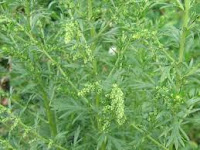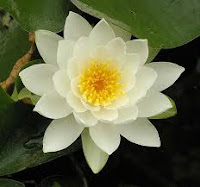Water plantain is not, as you might expect from the name one of the plantains such as Plantago major from which we get Isphagol. It is a member of the Alismaceae family. The leaves of water plantain are similar to those of plantain although the rest of the plant is markedly different. This seems not to have deterred the ancient herbalists when they named it. The subspecies which grows in China , var. orientalis has been the subject of research in China as it has long been used in their traditional system of medicine. Most of the research has supported the traditional uses. In China it is called Ze-Zie. The name Alisma is thought to come from the Celtic word, alis, which means water, while plantago-aquatica, means water plantain, so that is how it gets its English name.
 The fresh leaves and roots are toxic, but the toxins disappear when heated so are fine cooked or dried. The seeds are subject to some medical confusion, at least in terms of their reported traditional uses, as they are said to aid conception and to promote sterility.
The fresh leaves and roots are toxic, but the toxins disappear when heated so are fine cooked or dried. The seeds are subject to some medical confusion, at least in terms of their reported traditional uses, as they are said to aid conception and to promote sterility. Water plantain grows in damp ground, ditches, and on the edges of shallow ponds and other such bodies of water. They are native to Europe , including Britain , Asia and North America , and can grow to heights of just over three feet tall. It flowers between June and August, and the seeds ripen between July and September.
 The root is rich in starch and maybe eaten if well-cooked, and the leaves can be eaten if boiled very well. The leaves have antibacterial properties as well as cholesterol lowering ones, and promote sweat which is especially good in some fevers. They also have an effect of lowering blood pressure, and used externally, fresh are a counter-irritant, like nettles, to the pains of rheumatism and arthritis. They have been used to treat dysentery, kidney stones, and gravel. A fresh leaf poultice is put on swellings and bruises.
The root is rich in starch and maybe eaten if well-cooked, and the leaves can be eaten if boiled very well. The leaves have antibacterial properties as well as cholesterol lowering ones, and promote sweat which is especially good in some fevers. They also have an effect of lowering blood pressure, and used externally, fresh are a counter-irritant, like nettles, to the pains of rheumatism and arthritis. They have been used to treat dysentery, kidney stones, and gravel. A fresh leaf poultice is put on swellings and bruises. In some countries the dried stem bases are grated and eaten for heartburn and digestive problems, washed down with plenty of water. The seed has astringent properties and is used to stop bleeding.
In some countries the dried stem bases are grated and eaten for heartburn and digestive problems, washed down with plenty of water. The seed has astringent properties and is used to stop bleeding. The essential oil extracted from the root has antibacterial properties, reduces cholesterol leves and has also been used as a diuretic and to lower high blood pressure. The root has also been used to protect the liver and kidneys and to cure diarrhoea. It was once believed to be a cure for rabies, and was also called Mad Dog weed. However there is no clinical evidence to support this use.
The bitter juice which can be expressed from the plant is a diuretic; the bruised leaves can cause the skin to blister. However in the US it was formerly used as an antidote to rattlesnake bites.
Few studies have been carried out on the Alisma plantago-aquatica, or Water plantain that is common there. Perhaps this weedy plant hides more than we could have thought.
.































